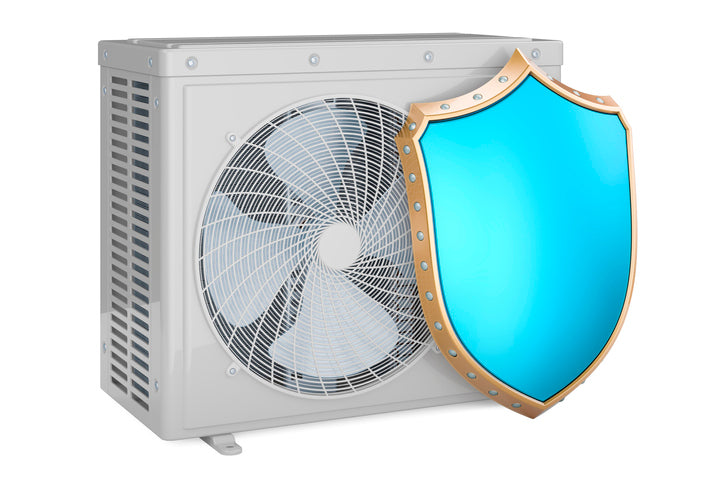How To Improve Air Circulation in Your Home

If you want to keep your home comfortable and cozy all year round, you must maintain proper air circulation throughout the space to ensure a healthy and hospitable home. Sufficient air circulation assists in regulating the temperature, reducing humidity, and minimizing pollutants. While a quality heating, ventilation, and air conditioning (HVAC) system can aid in achieving these objectives, it’s important that you take steps to ensure your home’s air circulation remains unimpeded. Here are a few great strategies and suggestions on how to improve air circulation in your home, making it a more pleasant place to live.
Why Air Circulation Matters
Why is proper air circulation so important? Without proper ventilation, dust, pollutants, allergens, moisture, and more can accumulate in your home. This can potentially lead to health issues and reduce quality of life, especially for the young, elderly, and those with respiratory and other health issues.
Additionally, poor airflow can cause uneven temperatures in your home, making it uncomfortable, inefficient, and costly to heat or cool. Meanwhile, high humidity levels mean more moisture in the home, which encourages the growth of mold and mildew. This is bad for your health and can seriously damage your home’s structure and interior elements.
Since poor air circulation forces your home’s HVAC system to work harder in order to maintain consistent temperatures, you will notice an increase in your energy bills. Constant use can also overtax your HVAC system, shortening its working life.
Now that you know why you should improve air circulation in your home, explore how you can accomplish this.
Open Windows and Doors
The easiest, cheapest way to improve air circulation in your home is to throw open the doors and windows every now and then to let fresh air in and kick stale air out. To ensure this option is effective, create cross-ventilation by opening windows or doors on opposite sides of a room or hallway to encourage airflow. Do this throughout the entire house for better air circulation.
You can also use window fans to draw fresh air in and push stale air out. Place one fan facing inward on the side of the house where the breeze is coming from and another facing outward on the opposite side. Set up a series of fans throughout the house to encourage an airflow pathway from one end to the other, drawing fresh air throughout the whole home.
Install Ceiling Fans and Exhaust Fans
Ceiling fans and exhaust fans effectively improve air circulation in a home. A ceiling fan distributes air evenly throughout a room, drawing the air upward and casting it back down in a constant cycle. If the fan is adjustable, you can set the fan blades to rotate counterclockwise to create a cooling breeze during the summer months. When winter comes, reset them to rotate clockwise at a low speed to circulate warm air while keeping the breeze down.
Exhaust fans are another worthwhile option. Ideally, you should install exhaust fans in areas prone to moisture buildup. Bathrooms and kitchens that lack windows often have exhaust fans to remove excess humidity, odors, and heat, preventing mold growth, improving air quality, and keeping things cooler.
Schedule Periodic HVAC Maintenance
Naturally, your HVAC system plays a big part in your home’s overall air circulation. Keeping it in good working order is the best way to ensure it continues to do the job properly and efficiently. Here are some tips for essential HVAC maintenance:
- Regularly clean and replace your HVAC filters to prevent clogs that minimize the free flow of fresh air. Check the manufacturer’s guidelines for recommended filter replacement frequency.
- Keep your HVAC system’s ducts and vents clean and clear to ensure unobstructed airflow. Every few years, hire a professional to clean out the system and ductwork. This is beneficial because the airflow sometimes becomes obstructed deep inside the system.
- Inspect all HVAC ductwork for signs of leakage. If you find any leaks, seal them up to prevent conditioned air from escaping and unconditioned air from entering. A closed system simply works better, saving you money when the monthly energy bill arrives.
Rearrange the Furniture
Proper furniture arrangement can significantly improve airflow throughout your home. Ensure rugs and furniture aren’t blocking any vents. Clutter and poorly positioned chairs, couches, tables, and other pieces of furniture can become obstacles, leading to poor air circulation. Create pathways through which air can circulate by strategically placing your furniture so that it allows the air to move freely throughout the home.
Use Natural Ventilation
Windows and doors, as mentioned, are the easiest options for letting the sunshine and fresh air into your home. If your home has multiple levels, make sure the upper and lower windows and doors work in tandem. Warm air rises while cool air falls, so ensure the warm air can exit through the upper windows while the cool air is drawn in through the lower ones. Installing ventilation louvers in the attic and crawl space or basement is a clever way to allow hot air to escape while fresh, cool air enters these enclosed spaces.
Utilize Devices That Improve Air Quality
You can give your home’s air quality a boost by investing in devices such as air purifiers, humidifiers, and dehumidifiers. Air purifiers, especially ones equipped with HEPA filters, keep the air clean, removing noxious odors, dust and debris, dander, pollutants, and other impurities from the air. They don’t improve air circulation, but they keep the present air clean and healthy.
Humidifiers and dehumidifiers work to maintain proper humidity levels in your home. Dehumidifiers and humidifiers prevent the presence of mold or add moisture to the air, respectively, creating air that’s easier and better to breathe. Just be sure to check them periodically to ensure the filters are clear and any excess water in the dehumidifier is drained from the device’s tank.
Final Suggestions
Now you know how to improve air circulation in your home. Enhancing air circulation in your home is essential for maintaining a comfortable and healthy living environment. By following these practical tips, you can improve indoor air quality, regulate temperature, and create a more pleasant atmosphere for you and your family.
Seeking other ideas for optimizing your home’s air circulation and improving your quality of life? Reach out to the team at Pioneer! We’re HVAC and air circulation experts, offering everything from hidden duct mini splits to other devices that will keep the air flowing in your home.







